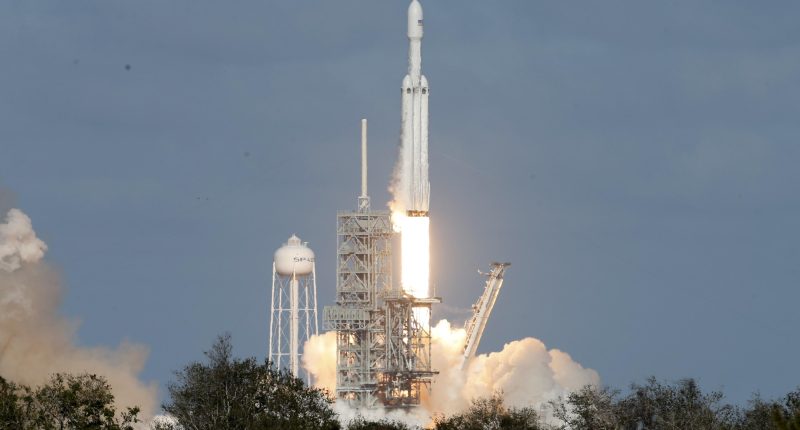ELON Musk’s SpaceX rocket has successfully launched Nasa’s Psyche spacecraft into orbit.
The orbiter spacecraft is now bound for a mysterious metal asteroid in deep space.
It marks the beginning of a six year mission that hopes to uncover the truth about how planets like Earth form.
The launch was only the eighth flight from SpaceX’s Falcon Heavy rocket.
There was a risk of the Psyche spacecraft spiralling out of control before it could open its solar panels ready for deep space travel.
However, it seems to be on its way to deep space successfully.
READ MORE ON NASA
Although over the next six years, there is plenty that could go wrong.
The asteroid, known as Psyche 16, is located 2.2billion miles away on the far edge of the large asteroid belt between Mars and Jupiter.
The mission is Nasa’s first in deep space with the Deep Space Optical Communications system, which will send information from further flung corners of the universe back to Earth.
The orbiter spacecraft will investigate material from the asteroid, that’s been around since the early days of our solar system, and never return back to Earth.
Most read in Tech
“We have no technology for bringing Psyche back to Earth,” said Lindy Elkins-Tanton, principal investigator of the Psyche mission.
“There isn’t any way to do that. And then if we did, it would probably be a really bad day on Earth, because we also have no technology for putting it into a stable orbit.”
The Psyche spacecraft won’t reach its destination until August 2029, following a gravity-assisted slingshot manoeuvre around Mars in 2026.
Unlike the OSIRIS-REx mission to collect samples from 4.5-billion-year-old asteroid Bennu, the Psyche spacecraft won’t ever land on the asteroid, or as Tanton explained, ever see Earth again.
It will instead make orbits around the asteroid at an eyewatering 430miles per hour.
Nasa’s cutting edge ‘hall-effect thrusters’ – which have so far only been used to get to moon – will keep the spacecraft in place and let the scientific instruments on board do their job.
It will keep this up 448 days in total, across five mission phases: A, B1, B2, C and D.
Each phase will use different instruments to inspect the asteroid at different distances, getting gradually closer to the asteroid through each phase.
Psyche 16
Of particular interest to scientists is a 173-mile-wide impact site on the asteroid.
Scientists hope the giant dent can help reveal more about the collisions that occurred as the solar system was forming, and ultimately, be a substitute for the inaccessible iron core of Earth.
Once the spacecraft is in place, scientists will be able to study the metal asteroid to determine how the rocky planets of our solar system, such as Mercury, Venus, Mars and Earth, formed.
Scientists are hoping they will be able to determine whether the asteroid has an ancient magnetic field.
If it does, then scientists will know the asteroid is the leftover core of what would have been a planet.
Scientists believe the asteroid was once on its way to becoming a planet.
Read More on The Sun
But a series of collisions in the chaotic early days of our solar system prevented that from happening.
Once proven, scientists hope they can better understand how our solar system – and other planets further afield – were born.
Best Phone and Gadget tips and hacks

Looking for tips and hacks for your phone? Want to find those secret features within social media apps? We have you covered…











